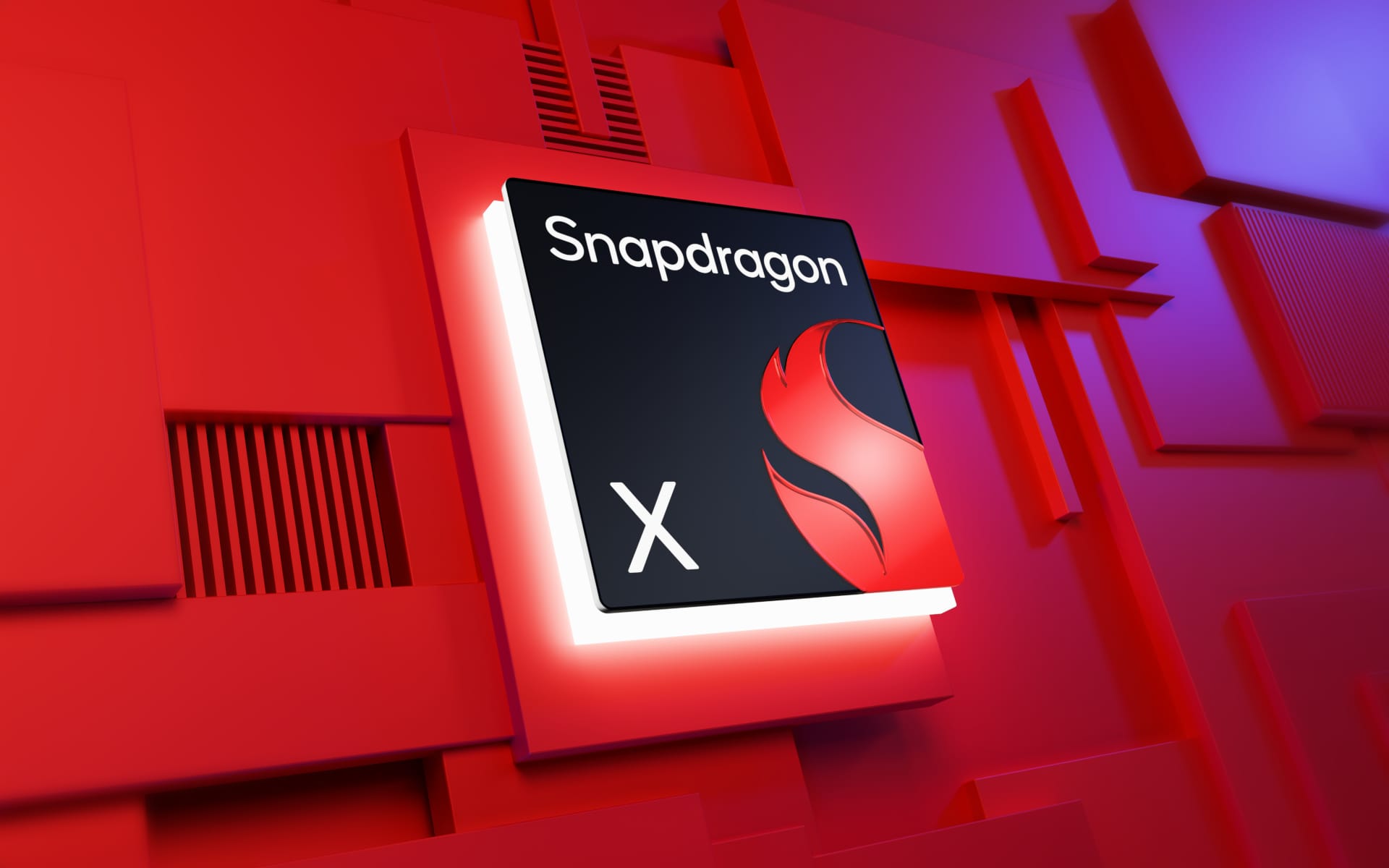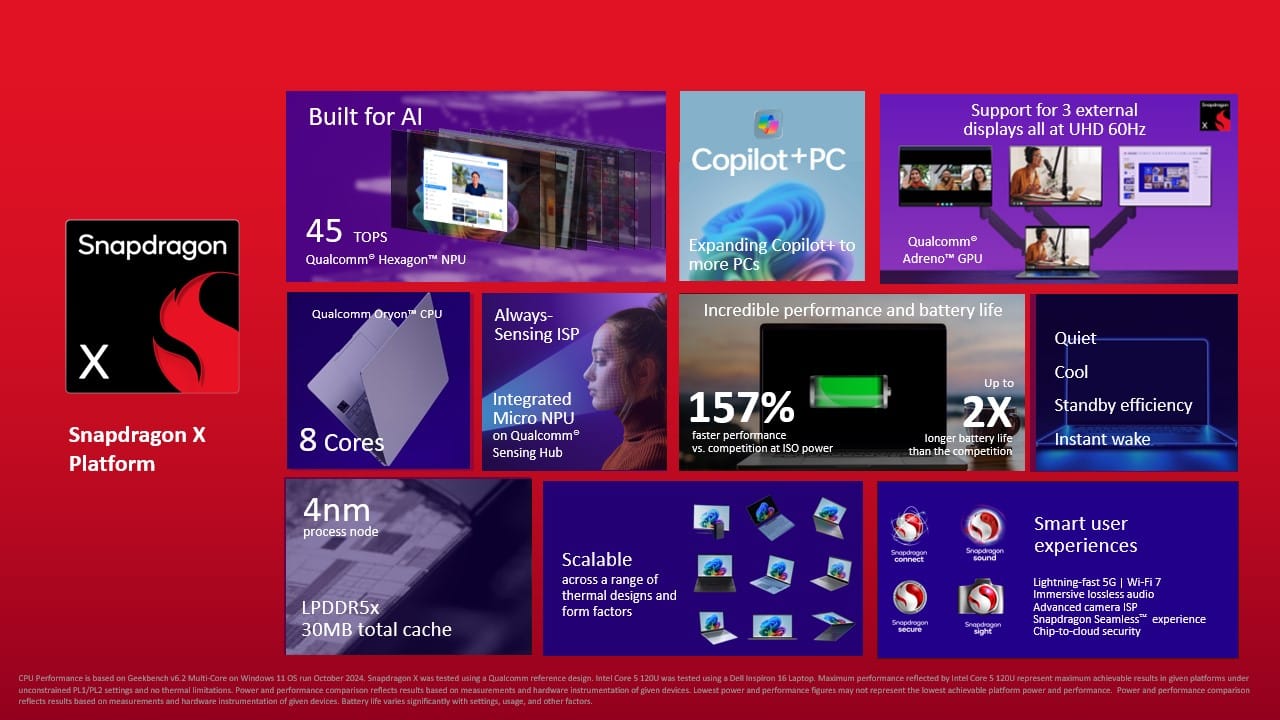Qualcomm has unveiled the Snapdragon X, its latest Oryon-powered chip that's aimed at computers in the $600 range, focusing on all-day battery life.


While I love Android, I can't use an Android device as my primary workstation. For work, I typically use a Windows device, as it handles multitasking on larger screens more effectively. However, many Windows laptops have middling battery life, an issue Qualcomm says it has solved with its Snapdragon X Series chips. Laptops powered by the Snapdragon X Elite or X Plus aren't very budget-friendly, though, which is why Qualcomm is announcing the new Snapdragon X chip to deliver the same AI and battery life performance at a lower cost.
With fewer CPU cores clocked slightly lower than those in the X Plus and X Elite, the Snapdragon X allows Qualcomm to offer it to OEMs at a lower price. However, Qualcomm claims the chip still delivers class-leading performance, achieving up to 163% faster single-core and 157% faster multi-core performance in Geekbench 6 at the same power level as the Intel Core 5 120U. Qualcomm attributes these gains to the custom Arm-based Oryon CPU cores it designed for the Snapdragon X Series.
The Snapdragon X is the fourth chip to feature Qualcomm's custom Oryon CPU cores and the third in the X Series. Like the other chips in the X Series, the Snapdragon X is fabricated by TSMC on its 4nm N4 node. It uses first-generation Oryon cores, like its higher-tiered X Series siblings, unlike the Snapdragon 8 Elite, which uses second-generation Oryon cores.
Specifically, there are 8 first-generation Oryon CPU cores with a base clock speed of 3.0GHz in the Snapdragon X. In contrast, there are variants of the Snapdragon X Plus that have 10 first-generation Oryon CPU cores with a base clock speed of 3.4GHz and variants of the Snapdragon X Elite that have 12 first-generation Oryon CPU cores with a base clock speed of 3.8GHz. The total cache sizes also differ, with the Snapdragon X featuring 30MB of system cache versus up to 42MB of system cache in some variants of the X Plus and all variants of the X Elite.

Apart from the number of CPU cores, CPU clock speeds, and system cache levels, there aren't really any other differences between the Snapdragon X, X Plus, and X Elite. All three chips have a memory bandwidth of 135 GB/s and support LPDDR5X RAM. Each comes with Qualcomm's always-sensing, 18-bit ISP, the Qualcomm Sensing Hub, and a display processing unit capable of outputting to 3 external 4K60 displays.
More importantly, the Snapdragon X also features Qualcomm's custom Hexagon NPU. Its 45 TOPS performance allows Snapdragon X devices to meet the requirements for inclusion in the Copilot+ program. Copilot+ PCs have enough computing power to handle features like live translation, cocreator, Windows Studio Effects Animate, Windows Studio Effects Portrait Light, Generative Fill in Photos, Generative Erase in Photos, Super Resolution in Photos, Click to Do, and Microsoft Recall.
In terms of raw graphics performance, Qualcomm says the Snapdragon X delivers up to 319% better performance in the 3D Mark Wildlife Extreme benchmark versus the Intel Core 5 120U at the same power level.

Qualcomm hopes that OEMs will create PCs in the $600 range for students, freelance workers, or just price conscious consumers who mostly care about running basic productivity and professional apps while on-the-go. The Snapdragon X chip is aimed at consumers who prioritize reliable performance and all-day battery life.

I've personally been using the Snapdragon X Elite-powered Yoga Slim 7X since it came out last year (I used it to write this very article, in fact) and I can attest to the performance/battery life claims. App compatibility was a bit of a concern for me at first, but since I picked up the PC, Google Chrome, Google Drive, my preferred VPN, Slack, and more became available. While some apps, such as Discord, lack native Arm64 ports, I have found suitable alternatives.
Given what I've experienced already in terms of day-to-day performance and battery life with the higher-tier Snapdragon X Elite, I'm excited to see how the new Snapdragon X will fare. I suspect that performance will be more than adequate for most people and that battery life will be stellar, but I'll have to wait for PCs powered by the new chip to come out.
Qualcomm says that over 60 designs powered by the Snapdragon X are already in production or development, with more than 100 coming by 2026 from OEMs like Acer, ASUS, Dell, HP, and Lenovo. These PCs are expected to sell in the $600 range, though of course the exact price will depend on the specific configuration, components, and market of sale.
To date, Qualcomm's Snapdragon X Series chips have only appeared in laptops. They will soon also appear in mini desktop PCs. Qualcomm says it'll share more information on the first mini desktop PCs powered by an Snapdragon X Series chip tomorrow.